Vacheron Constantin Chronomètre Royal: Flamboyance, Precision, And The “Batman”
Following Nick Gould’s expert spot of Vanessa Redgrave’s Rolex Reference 5513 Submariner with Explorer dial, Elizabeth, Nick, and I embarked upon a Clubhouse chat regarding the nicknaming of collectible watches (which you can listen to here).
One of the subjects that came up during that discussion was the Vacheron Constantin “Batman” – a nickname coined for the Chronomètre Royal Reference 6694 back in 2007 by members of the now-defunct Hour Lounge forum. We thought it might be time to re-post the story here that kickstarted the original “Batman” discussion in freshly edited form as the story of the Chronomètre Royal is one always worth telling.

Vacheron Constantin Chronomètre Royal “Batman” Reference 6694 in white gold (photo courtesy Phillips)
Behind the delightfully dated name hides perhaps one of horology’s most interesting models: Vacheron Constantin’s Chronomètre Royal (“Royal Chronometer”). This watch was one of the first attempts at serial production of a precision timepiece.
The race for precision: what is a chronometer?
Today everyone takes for granted that a watch should keep precise time, but more than 100 years ago, in 1907 when the Chronomètre Royal was first launched, this was far from the case. The materials used were not as advanced as those of today, and perfect regulation of a watch was practically equivalent to neurosurgery . . . well, you catch my drift.
This is one reason why brands fiercely competed at observatory trials and always proudly announced prizes and results obtained at these contests.
A chronometer is an object that measures time; however, in watch parlance this word designates a precision timepiece. It seems that this word was first used in this sense by French watchmaker Pierre Le Roy in 1761. During the nineteenth century it came to generally designate precision timekeepers.
In 1925, the Swiss Association for Chronometry defined a chronometer as being, “a watch that has received a certificate from an astronomical observatory.” Since 1973, the term chronometer designates a watch having successfully passed the Contrôle Officiel Suisse des Chronomètres (C.O.S.C.) trials.
However, major brands did not wait until 1925 to compete against one another at observatory trials. In Switzerland, chronometer competitions began in Neuchâtel in 1866 and Geneva in 1873, ending respectively in 1967 and 1975. Competitions for precision wristwatches ran from 1945 through to 1967 in which manufacturers would submit one or several specially prepared watches for competition.
Interestingly, these watches were never meant for sale, the purpose of these trials being both competition and also testing grounds for research on chronometry. And the certificates won also worked wonderfully as marketing and communications tools for the manufacturers in selling their “regular production” watches.
Prior to being allowed to compete, entrants were tested. And those meeting the rigorous standards were eligible for actual competition. The watches were tested in five positions, at three temperatures (4°C, 20°C, and 30°C), and eight periods for 40 to 44 days. Each movement was graded on a performance scale and awarded a certificate with a final score and rating.
It is important to note that these movements did not have a particularly fine aesthetic finish but were technically the best of the best: the surfaces of pinions and wheels were highly polished with exceptionally even tolerances; springs were pre-tested and hand-chosen; and the dimensions of shafts and bearings were perfectly executed.
To make an easy comparison, these competitions were to watch brands what Formula 1 racing is to car manufacturers: a laboratory and a display of knowhow and mastery.
It is interesting to note that these competitions were extremely prestigious, and the names of the winners were published in newspapers along with the identities of those responsible for regulation who, not unlike master watchmakers today, were put in the spotlight with great pride.
Birth of the Vacheron Constantin Chronomètre Royal: pocket watches
Building on its experience and reputation gained winning numerous prizes, Vacheron Constantin decided to take the jump and create a precision timekeeper destined for both competition and actual use. Consequently, in 1907 the Chronomètre Royal was born.
The name was filed for trademark on May 28 of the same year, and on May 8, 1908 trademark protection was filed for its English counterpart, “Royal Chronometer.”

Vacheron Constantin Chronomètre Royal pocket watch from 1908
The basic idea behind this watch was simple: it was to be an extremely legible precision instrument robust enough for everyday use.
The Chronomètre Royal was not adorned with any frills or superlative movement finish. It was a technical watch, and as such the movement had no high-grade aesthetic finish typical of the Genevan style but a simpler gilt finish like the movements used in competition.
The dial was white enamel (chosen as it does not oxidate) and it was housed in a simple gold case (with some rare models in silver) with a sunray guilloche pattern on the back cover.
The calibers went from 11 to 22 lignes and were built on the same principle. Regulation was accomplished via micrometric screws.
The Chronomètre Royal became an instant success and was avidly sought after by the cognoscenti. The South American market was the first to make orders.
A letter dated April 17, 1907 from Campos in Rio de Janeiro shows the interest of this agent in a robust precision instrument. Campos had organized a lottery system in which subscribers would pay a monthly fee to take part in a series of draws. This seems to have been a successful way to sell watches in Brazil at the time and was tested by different agents for different brands.
The winner would win the right to buy the watch, and the other subscribers would enter the next draw. This system was so successful that Campos delivered 3,022 watches between October 22, 1907 and December 31, 1911, representing 80 percent of total production of the Chronomètre Royal.
One of the reasons behind the Chronomètre Royal’s success in South America was the fact that it was one of the first watches able to resist the altitude, constant changes in temperature, and high humidity of the continent and still keep perfect time.
Just over 10,000 Chronomètre Royal pocket watches were made between 1907 and 1919. And even though production almost completely ceased at the beginning of the 1930s (a few interesting “helm watches” were produced during that time), Vacheron Constantin continued competing in the Geneva observatory contests and even set a record in 1934: first prize for a deck chronometer, first prize for a series of five, and first prize for a single chronometer – a record only beaten 13 years later by . . . Vacheron Constantin.
In 1948, the Neuchâtel observatory’s centenary year, Vacheron Constantin received eight first prizes for eight movements! Between 1931 and 1961 Vacheron Constantin won 15 first prizes (basically a first prize every other year).
Vacheron Constantin Chronomètre Royal: early wristwatches
The Chronomètre Royal came back with a bang in 1953 with the launch of the Chronomètre Royal wristwatches powered by manual Calibers 1007BS (subsidiary seconds) and 1008BS (central seconds). The BS in the appellation stands for “balance stop”; Vacheron Constantin was one of the first (if not the first) to use hacking seconds in a wristwatch made for civilian use.
Contrary to the original Chronomètre Royal pocket watches, the movements of these modern reinterpretations for the wrist were finely finished (both functional and aesthetic finish) to the highest standards and a sight for sore eyes. These watches are considered by collectors and experts to be one of the finest wristwatches of the time in terms of technical advance, precision, movement finish, and elegance.
Different references with different designs were successively launched, all powered by either Caliber 1007 or Caliber 1008.
These watches were accompanied by a bulletin d’observatoire (“observatory certificate”) certifying the superlative regulation of the watch.
In an advertisement from 1957, Vacheron Constantin stated that the Chronomètre Royal is a watch with, “class, created for a demanding clientele by the same experts who, at Vacheron Constantin, have produced victorious chronometers at the observatory trials.”
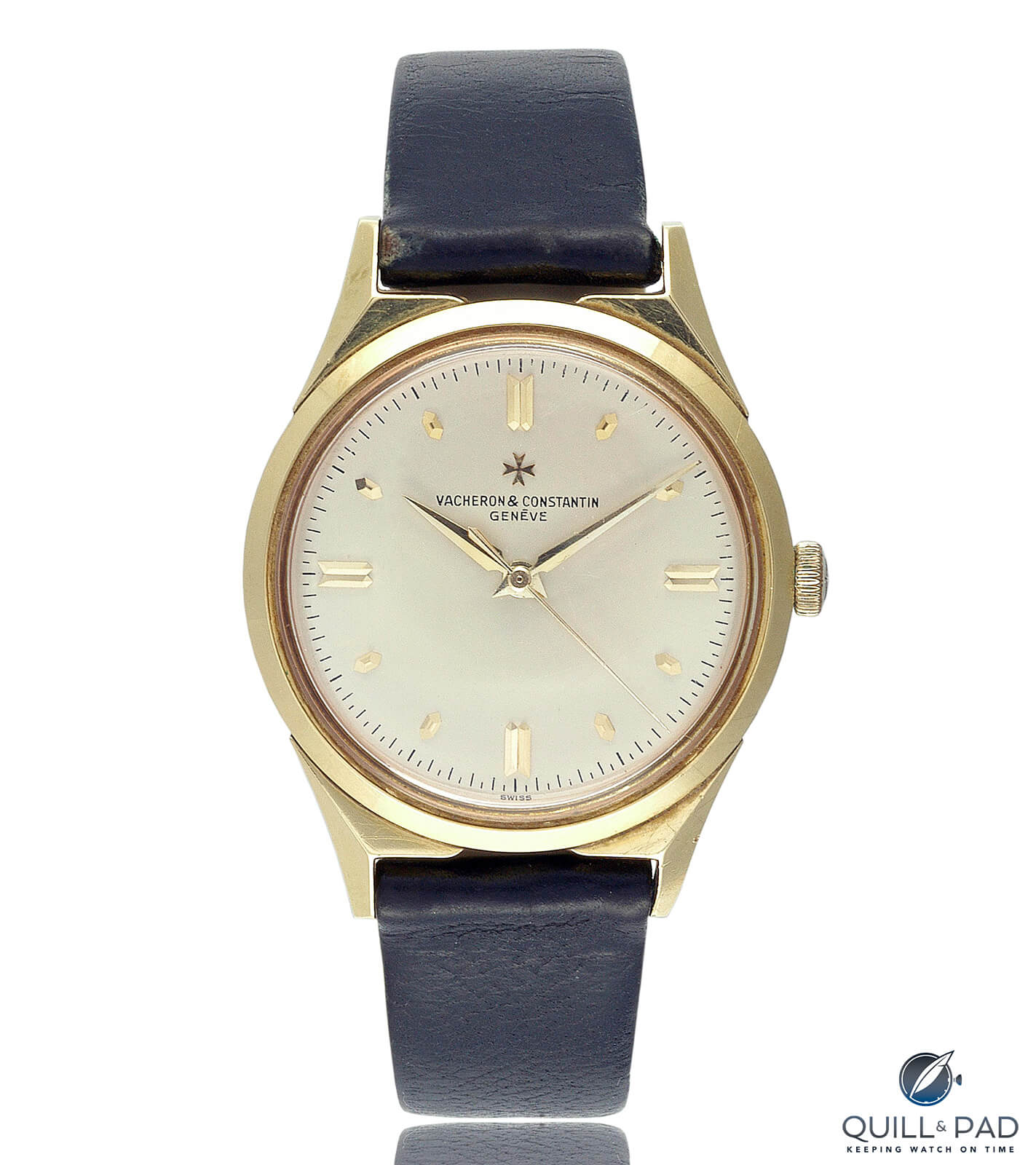
Vacheron Constantin Chronomètre Royal from 1956
In 1956, Vacheron Constantin not only received first prizes in categories A and B (the categories denoted movement size), but actually had eight movements placed within the first 10 in each category.
With observatory testing having been abandoned in the late 1960s, the C.O.S.C. took up the baton in 1973 to certify the performances of individual watch movements. Since the creation of this organization, only watches whose movements have been certified by it can be officially called chronometers.
The C.O.S.C. results provide a snapshot of a movement’s rate at a given moment. Nonetheless, due to their strictness, these tests are highly selective; only very high-quality movements can hope to pass them.
This is therefore an examination based on excellence, even if the way that the movements perform under everyday circumstances is still directly dependent on the wearers. To earn chronometer certification, a movement must not only be made using the highest-quality components, it must also be treated with special care on the part of the watchmakers during assembly.
The movements are tested for 15 consecutive days at six positions and three temperatures. To obtain chronometer certification the movement should, among other criteria, stay within a daily average rate of -4/+6 seconds per 24 hours.
In 1962, Vacheron Constantin replaced manual Calibers 1007 and 1008 with Caliber 1072, Vacheron Constantin’s first automatic caliber with C.O.S.C. certification. Caliber 1072 is considered one of the best automatic calibers of its time.
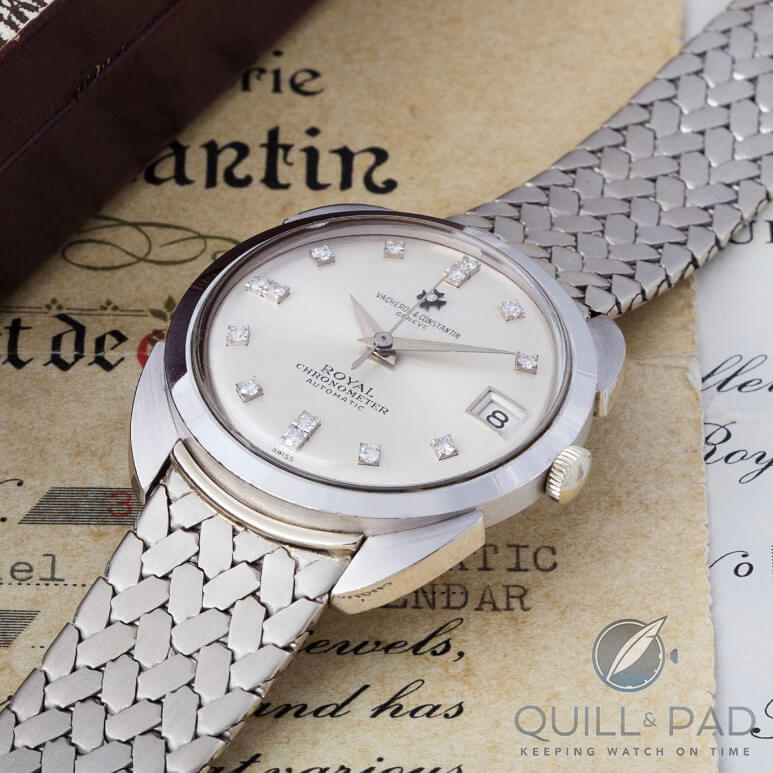
Vacheron Constantin Chronomètre Royal “Batman” Reference 6694 with diamond markers (photo courtesy Phillips)
Caliber 1072 is found in one of my all-time favorite watches: Reference 6694, which not only puts Vacheron Constantin’s technical expertise on display but also the way this company was thinking outside the box in terms of design. This is a wristwatch that definitely would look good on Batman’s belt!
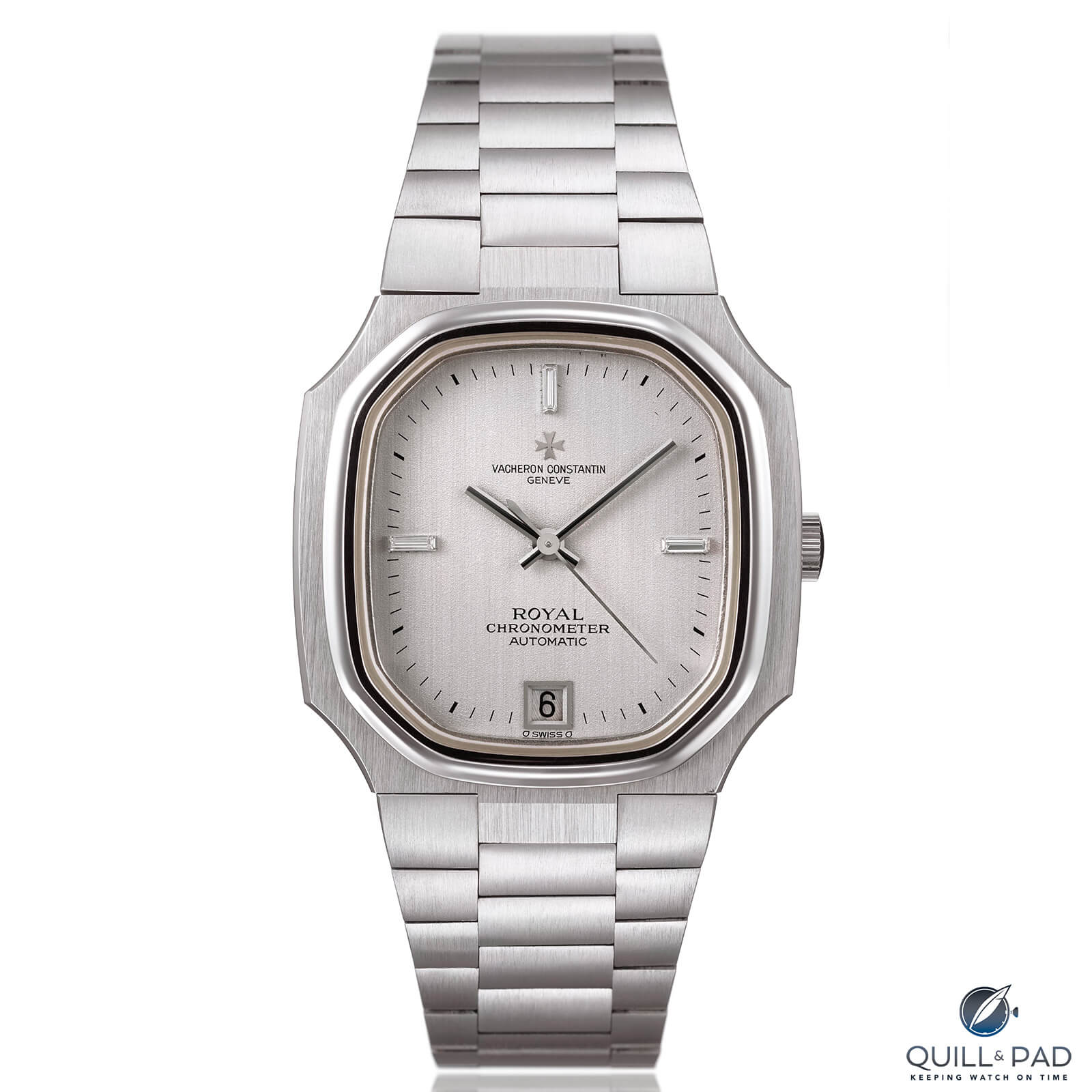
Vacheron Constantin Reference 42001 Chronomètre Royal from 1976
Nevertheless, in the mid-1970s the public’s attraction to mechanical precision timepieces seemed to wane (especially with the arrival of quartz movements), and other than a very original rectangular “sporty” model from 1976 that was powered by Caliber 1096 the Chronomètre Royal line was more or less abandoned.
The Chronomètre Royal was reborn in the early 1990s but not as a model range of its own. Surprisingly, this was put in the “casual sports” Phidias collection (an evolution of the 222 models and a close cousin to the Overseas).
In 1998, Reference 47022 was introduced powered by automatic Caliber 1126, integrating the dagger type hands found in the original models from the 1950s. This model became an instant success and one of the rare non-complicated models for which there was actually a waiting list!
The Chronomètre Royal strikes back: the 2007 Historiques version
In 2007 the Chronomètre Royal, now dubbed Chronomètre Royal 1907, returned to join the newly reborn Historiques model range.
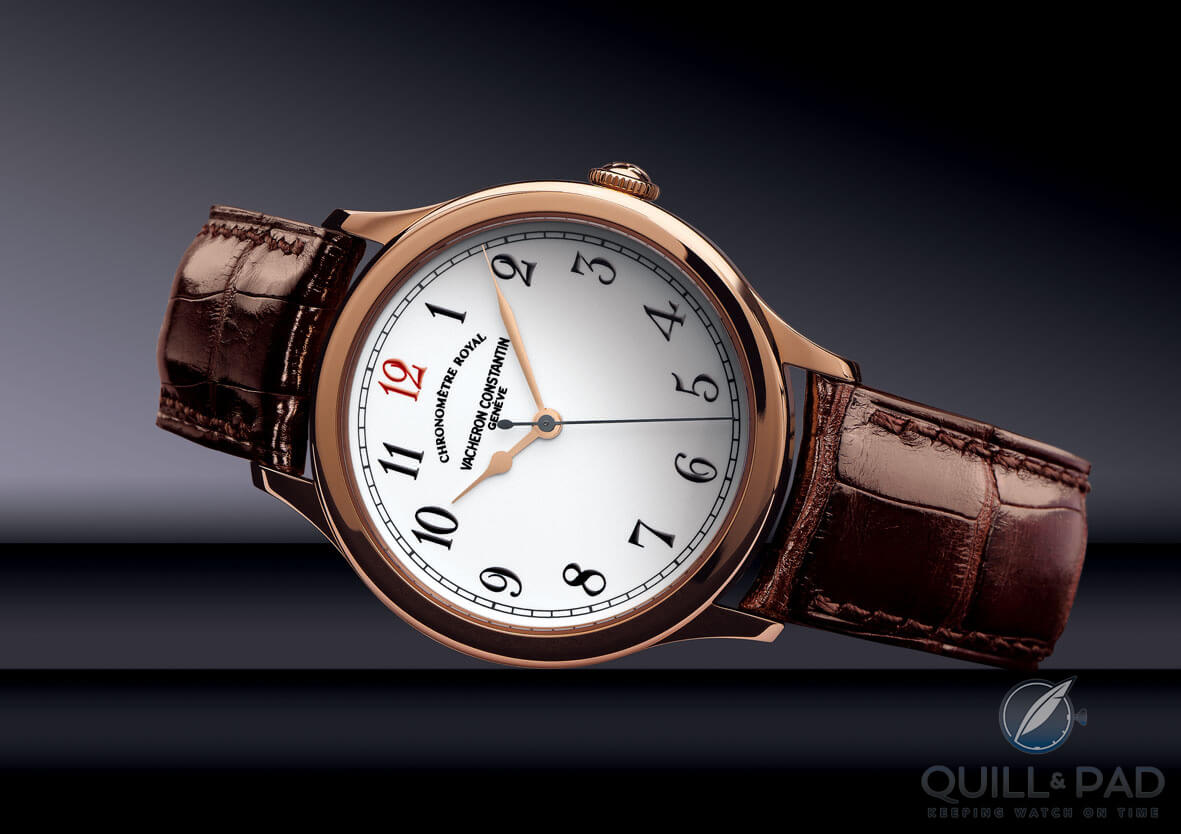
Vacheron Constantin Chronomètre Royal 1907 from the 2007 Historique collection
When in 2006 Vacheron Constantin decided to celebrate the hundredth anniversary of the Chronomètre Royal the brand was sure of only two things: it had to have an enamel dial as a tribute to the original 1907 model and it must be powered by a manufacture automatic caliber.
Different paths were explored for the choice of case: what the design team wanted to avoid was a wristwatch that looked like a re-cased pocket watch. A first direction led the team to the then freshly launched Patrimony Traditionnelle model range, but the aesthetic codes of that model did not marry well with the enamel dial.
And neither did the other interesting path leading to the daring Reference 6694 (known as the Batman in collecting circles following the original posting of this story in 2007).
The Chronomètre Royal wristwatches didn’t have any identifiable characteristics in terms of the case, so the team decided to use the case from the last Chronomètre Royal wristwatch, Reference 47022 (1988-2006), but enlarged to a more contemporary 39 mm diameter.
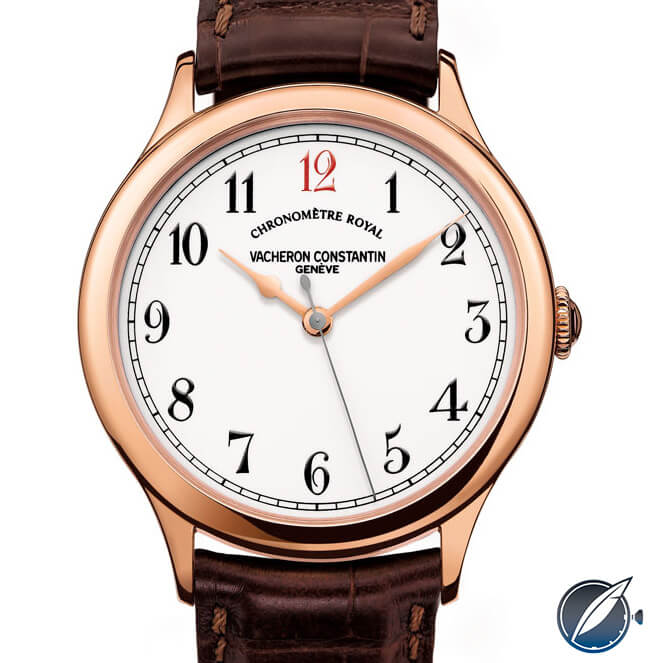
Vacheron Constantin Chronomètre Royal 1907 from 2007
Immense effort was put into the creation of the Chronomètre Royal 1907’s dial. First, the white gold base: Vacheron Constantin decided on using a white gold base, which is less prone to deformation than the more widely used yellow gold base.
Its periphery and center were engraved using the champlevé method to prevent singeing in these areas. Coated with enamel on the front and back to equilibrate tension, the dial was fired five to seven times in an 800°C kiln (each firing can take anywhere from a few seconds to a minute depending on the enameler’s gut).
The numerals and inscriptions on the dial were also enamel. Most enamel dials have lacquered numerals stamped onto them. In the case of the Chronomètre Royal 1907 from 2007, the numerals were not lacquered but were in fact enamel stamped on the dial and then once again fired. The extra difficulty resides in the fact that the dial has two different colors (black Arabic numerals and a Burgundy-red 12), which require different firing times in the kiln, necessitating an extra firing process, which increases risk of the dial cracking.
The overall tribute look was completed with pear-shaped hands similar to the original 1907 pocket watch.
A beautiful case, a lovely dial, and an iconic name may make a great watch, but not necessarily a fantastic one. The icing on the cake came in the form of Caliber 2460 SCC, an in-house automatic movement bearing the Geneva Seal. It was also C.O.S.C. certified.
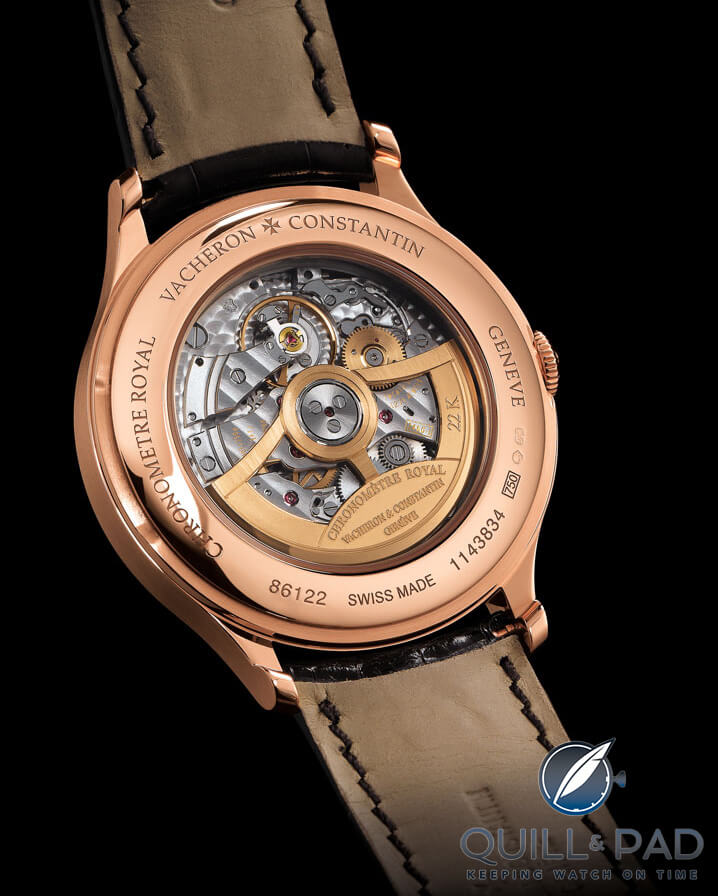
Vacheron Constantin Chronomètre Royal 1907 from 2007 from the back
Beating at a modern 4 Hz/28,800 vph frequency, Caliber 2460 SCC had a 43-hour power reserve and a rotor placed on ceramic ball bearings that made lubrication unnecessary. Aside from its flawless finish (both on the visible and non-visible parts), this caliber featured hacking seconds to enable precise time setting and a beautifully sculpted rotor.
Before being sent off to the C.O.S.C. to undergo the 15 days of testing, Caliber 2460 SCC was carefully regulated and tested under strenuous conditions to be certain of obtaining certification. Once back in the factory, it was cased and then put through a 30-day test period to make sure it was keeping time within the stringent chronometric criteria. The watch was delivered to the final client not only with the C.O.S.C. results but also with Vacheron Constantin’s internal test results.
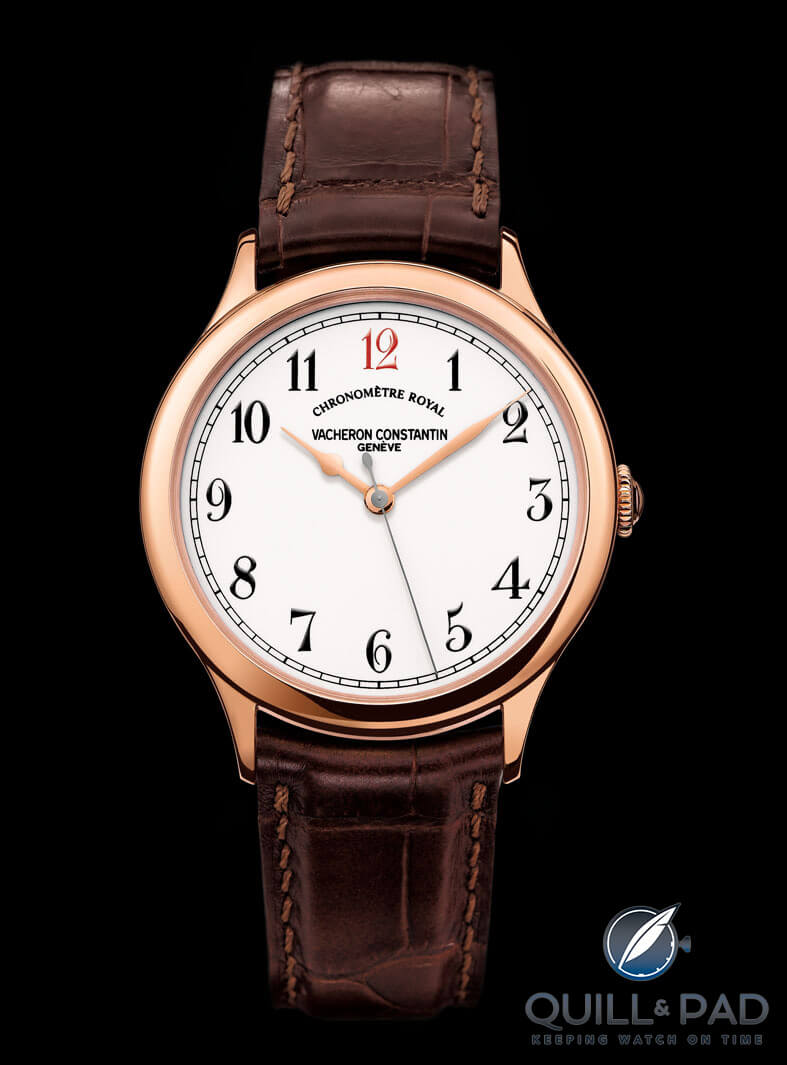
Vacheron Constantin Chronomètre Royal 1907 from 2007
As 2007 was the hundredth anniversary of the Chronomètre Royal, the first 100 pieces featured a Burgundy-red “12” while the rest were black like the remaining numerals.
A platinum version of the Chronometre Royal 1907 available only in Vacheron Constantin boutiques was added in 2011.
This watch was a pure concentrate of Vacheron Constantin elements: sotto voce elegance with several subtle details for the wearer to gradually discover and appreciate. It is a perfect watch for those who seek both a classical dress watch with a calm air of luxury and a high-performance precision timekeeper offering more than meets the eye.
My greatest hope would be to see the Chronomètre Royal models develop into a range someday, which could become the testing ground for chronometers and technical research and development, making these models a showcase of Vacheron Constantin’s mechanical know-how and achievements.
It would be like history rewriting itself.
For more information, please visit www.vacheron-constantin.com.
Quick Facts Vacheron Constantin Chronomètre Royal 1907
Case: 39 x 9.25 mm, pink gold
Movement: automatic Caliber 2460 SCC (based on Caliber 2460) with Seal of Geneva, 4 Hz/28,800 vph frequency, officially certified C.O.S.C.-certified chronometer
Functions: hours, minutes, seconds
Limitation: first 100 pieces with red 12
Original retail price in 2007: $34,000
You may also enjoy:
A History Of Vacheron Constantin’s Overseas Line, Culminating In 2016’s Worldtimer
Why I Bought It: Vacheron & Constantin Reference 4560 Triple Calendar
Give Me Five! Vacheron Constantin’s 5 Most Complicated Pocket Watches Ever



Leave a Reply
Want to join the discussion?Feel free to contribute!